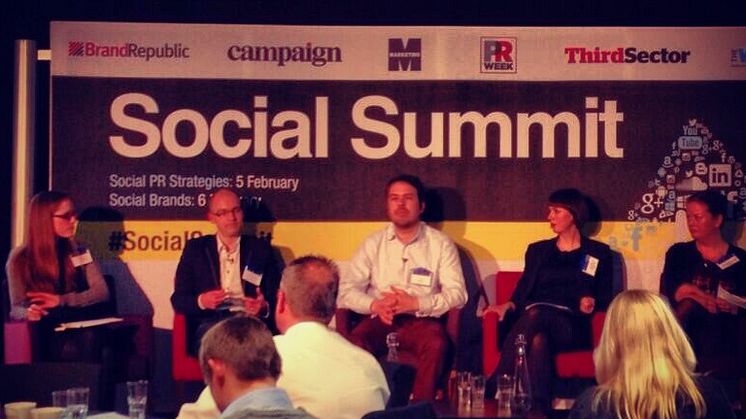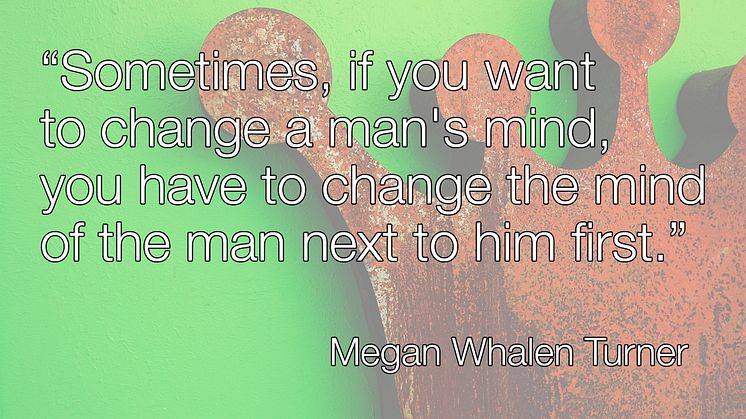
Blog post -
Ensuring your business is social in 2014
It is now ten years since the creation of the first social network (LinkedIn) and finally organisations seem to be waking up to the importance of social media. However, the vast majority are still only paying lip service to these sites and the millions of people who access them on a daily basis.
Just because you say you are on the likes of Twitter, Facebook and Pinterest and may have links to these channels on your website, does not mean that you are in fact a ‘social’ business.
For example, you may be a retailer who suddenly decides that you need to be ‘more social’ in order to seem more in tune with today’s customers. You set up a Twitter account and Facebook page then ask your PR agency to manage them for you. Job done you think and you give yourself a pat on the back for being ‘hip and trendy’.
However, that is just the tip of the iceberg. Social media now touches so many parts of a business from sales and marketing to IT, recruitment, HR, media relations, internal communications and customer service. Can you be sure all of these departments are working in alignment and have you set specific business goals that will be met through using social media?
In my experience as a strategist and trainer, social media can often give you interesting insight into a business. The better it is performing, the more likely the social channels will deliver results.
An excellent example of this is Manoir aux Quat’Saisons. Not only does this Michelin-starred restaurant have exquisite food served in an incredible location. They also have brilliant customer service and attention to detail. No surprises then that they are also great on social media - @lemanoir and www.facebook.com/lemanoirauxquatsaisons
From working with a large variety of businesses both large and small, in both B2B and B2C environments, I have developed a simple five step ladder to becoming a social business.
Stage 1 - create a delineated social media strategy
This should at the very least form a main plank of your marketing plan but increasingly, it should constitute a key part of your overall business plan as it includes so many different elements.
Given that customer behaviour is changing all the time and the social channels themselves are evolving, it is important that the management team of the business think about the target audience(s) for the company, how effective your website is, which are the most important channels, what content needs to be created and a variety of other factors.
Stage 2 - content creation
In order to be using social media effectively and indeed make full use of your newsroom, you need a constant supply of interesting, engaging content tailored to the channels you are using. Here is where I believe outside companies such as PR consultancies, marketing firms, web designers and advertising agencies can make a real difference.
We are now in an age where we are all editors, publishers or broadcasters – individuals and companies alike. So you need to make sure the content you are publishing is up to the job. And you can carry on delivering it on a 24/7/365 basis.
Stage 3- community management
Dare I say it, if you are a business on social media, you need to be S-O-C-I-A-L!
Rather controversially, I would say that whoever manages your channels must either be in-house or a dedicated account manager with excellent relationships with all staff within the organisation. And they must of course be a social person themselves as there is as much listening involved as engaging (more on this later).
It is very difficult to outsource your social media management completely, especially if it involves elements of customer service, networking or business intelligence. I would argue that only someone on the inside who spends 100% of their time on social media can do the job properly.
Stage 4- use advertising to hit specific targets on social
All of the key social media sites now offer advertising, whether in the form of pay-per-click, sponsored updates, targeted posts or video AdWords. And with recent algorithm changes at Facebook, it is now becoming increasingly difficult to hit targets using just organic community management (see this interesting article from Business Insider).
Just as businesses have allocated budgets for traditional marketing (print and broadcast advertising) and online marketing (Google AdWords), so they are now having to do the same on social. The key thing here though is to have interesting, engaging content and ensure you target the correct markets.
Stage 5 - create the right social culture within your business
Without this, your strategy will not work and it’ll be difficult to maximise the returns from social media. Starting with having comprehensive social media guidelines for staff, the idea is to communicate your social strategy to all employees so you are in effect empowering your business.
It is also vital that you get buy-in from senior members of the business. Without their support, your strategy will fail (see Olivier Blanchard’s great book Social Media ROI for more on this topic).At the same time, you must ensure there is good internal communication between both staff and departments within your company. Good social media starts within and any business that has good internal communications will always perform better than one that doesn’t.
Which brings me neatly onto a key part of a company-wide social media strategy. Having a socially aware and engaged workforce which communicates well, passes on ideas and shares best practise though sites like Yammer or Salesforce, means that you’re creating a fertile atmosphere for new ideas. Many of these could end up as content for your website or social media channels (both organic and paid-for) while others could lead to product innovation or cost savings.
The final element - learn to listen
So overlooked by major brands and companies, social interaction is a two- or multi-way process which should be a continuous conversation. It is not a monologue.
Remember that 40% of people on Twitter don’t ever tweet!
The range of social monitoring and insight tools now available – whether free or paid-for – can deliver a huge wealth of information about trends, audiences and competitors.
So as we head into 2014, perhaps it’s a good time to look at your business.
Are you really social or, like all the white bearded men in red suits shouting Ho Ho Ho, you are merely pretending!
By David Taylor, social media trainer, consultant and author







